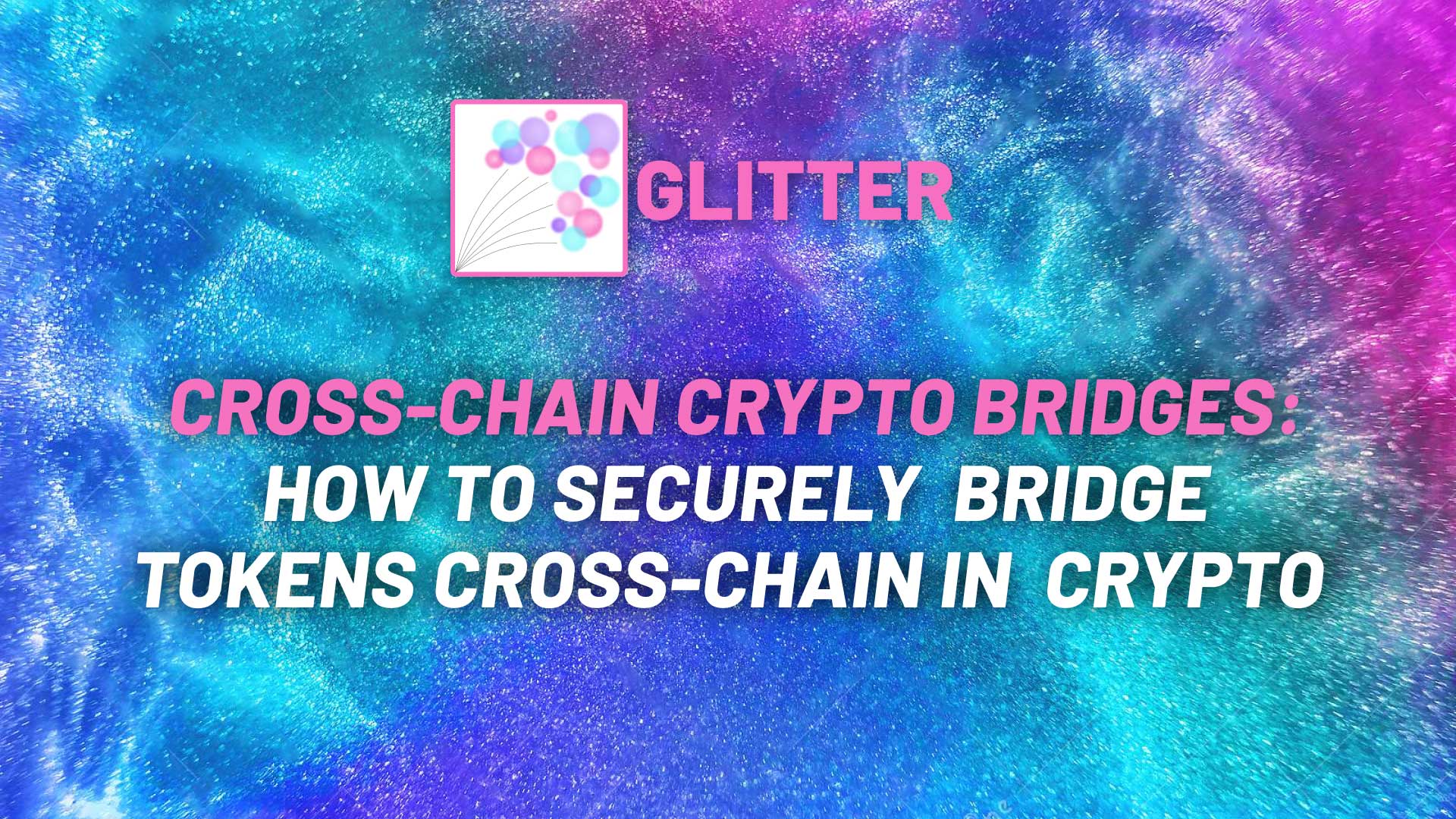Cross-chain crypto bridges: How to securely bridge tokens cross-chain in crypto
Nov 5, 2022

The exciting world of blockchains hasn't stopped growing. Since the launch of the first chain, Bitcoin, more than a decade ago, dozens of layer-1 blockchain networks have launched, each with unique strengths and applications. Major chains like Ethereum, Solana, BNB Chain, Avalanche, Algorand, and Cosmos have taken the spotlight, although plenty of smaller chains are vying for their piece of an ever-growing pie.
The proliferation of blockchains has created incredible opportunities for users, developers, and investors alike. But there is also a big challenge that comes with so many participants in the market. Established blockchains are somewhat isolated ecosystems---putting data and capital onto any blockchain is already a significant challenge. Moving it between them even more so.
This is where cross-chain bridges come in. These are applications and, in some cases, entire blockchains that are designed to help move data and capital securely between blockchains. A good example is Glitter Bridge---the first crypto bridge between Algorand and Solana. Glitter works by accepting tokens on one chain, before releasing an equivalent amount on another. While that might seem simple on the surface, Glitter relies on advanced smart contracts to make this happen quickly and securely.
In this article, we explore what these challenges are and how Rainbow Network, an entire blockchain ecosystem built to help make bridging tokens as simple as possible, solves these challenges uniquely.
How to bridge tokens cross-chain in crypto
A crypto bridge is a set of smart contracts that help move data and tokens between different blockchains. They're an important part of the growing crypto ecosystem as they enable capital to move between otherwise isolated ecosystems.
Let's look at an example of a crypto bridge in its simplest form.
Let's say Bob has 1000 USDT on BNB Chain that he would like to move to Ethereum. To move the tokens cross-chain, Bob deposits the USDT into a bridge smart contract on BNB Chain and specifies a withdrawal wallet on Ethereum.
Once the tokens are in the BNB Chain contract, the bridge sends a message to the other half on Ethereum. The Ethereum smart contract transfers 1000 USDT to Bob's nominated wallet on the new network.
What are the challenges with bridging crypto cross-chain?
In our above example, moving tokens across chains seems like a fairly simple process, however, there are some important things to keep in mind.
Liquidity is a major challenge for any bridge. For a cross-chain transfer to work, there needs to be sufficient liquidity on both ends to meet the needs of the bridge. This is because tokens aren't actually sent between the blockchains---tokens are instead locked on one half, and another set of tokens is released on the other end.
Security is another significant challenge. In Bob's case, both BNB Chain and Ethereum are well-established as highly secure blockchains, and anything that happens on the chains is as secure as the blockchain itself. However, for the crypto bridge to work, a request needs to be sent between them. The time the data spends between the blockchains creates an attack vector for hackers to exploit.
To help understand why we can imagine the low-tech Bank of Alice. When a client deposits money in Branch A, the bank sends a letter to Branch B telling them how much was deposited and by who. This means that Bob can put $1,000 in Branch A, and then head over to Branch B to withdraw it.
But this letter creates an attack vector. If it's unsecured, a malicious actor could create a fake letter with a forged deposit receipt. They could claim that they had deposited $10,000 in Branch A even if they hadn't, and then attempt to withdraw the funds from Branch B. If they forged the letter well, the attacker leaves with $10,000 that they never should have had access to.
Crypto bridges don't rely on letters, but they do need to ensure that data is secure while it's moving between chains.
Rainbow Network: A better way to go cross-chain
Rainbow Network solves the challenge of bridging crypto tokens by building an entire blockchain ecosystem to facilitate cross-chain transfers. Rather than relying on unsecured networks to carry messages between blockchains, Rainbow Network ensures that data always remains on-chain.
Built on top of the Glitter Bridge and inheriting the security of the Cosmos SDK, Rainbow uses on-chain listening nodes to ensure that funds can only be withdrawn by wallets that are authorized to do so. Blockchains are known for their security; Rainbow Network ensures that cross-chain bridging remains secure at all times.
Building an entire blockchain to support cross-chain bridging has some other incredible benefits. Because Rainbow Network has access to liquidity on all supported chains, developers and users can opt to transact on the Rainbow Network directly. DApps built on Rainbow can access liquidity from any supported chain, effectively erasing the barriers between blockchain ecosystems. A user-friendly mobile application means that anyone, regardless of their crypto experience, can begin exploring the opportunities within DeFi.
Rainbow Network isn't just a bridge: it's a secure, interoperable blockchain ecosystem.
To learn more about how Rainbow Network connects DeFi liquidity between blockchains, read our whitepaper.
About Rainbow Network
Scalability, interoperability, and ease of use are what every blockchain aspires to offer, yet few---if any---have achieved this. At Rainbow Network, we have, and in a very unique way.
Through the Glitter Bridge---a bridge that drives the unparalleled interoperability of Rainbow Network and allows for seamless connectivity between chains--- Rainbow offers DApp developers a blockchain that does away with the headaches of deciding where to base their project. By building on Rainbow Network, a project launching a DeFi DApp can instantly achieve multichain status, enabling them to deploy their token and application to a growing list of supported chains including Ethereum, Cosmos, Solana, and Algorand.
Beyond just interoperability, this cross-connectivity opens the floodgates to a wave of new liquidity from each ecosystem's user base. In addition, running on multiple chains innately offers multichain redundancy and increased security: if a hack or network outage occurs on one chain, a project on Rainbow Network can continue to operate with zero downtime on the other chains it's connected with.
Rainbow Network isn't just for builders---it's for everyone. We understand that the future of blockchains comes from mass adoption, which is why we've developed a native mobile application that will allow users of all experience levels to tap into the power and benefits the blockchain has to offer through a sleek, simple user interface.
The future of the blockchain is multichain, and the future of multichain is Rainbow Network.
Rainbow Network: Everyone's Welcome 🌈
Learn more at https://www.rainbownetwork.io/



